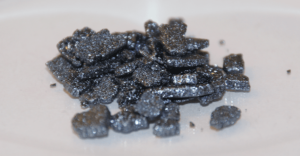Flavour Reversion- Flavor reversion refers to a phenomenon that can occur in certain foods, particularly oils and fats, where the flavor deteriorates or changes over time due to exposure to various factors. This can result in off-flavors, rancidity, or other undesirable taste characteristics. Flavor reversion is often associated with oxidative processes and can impact the quality and shelf life of food products. Here are some key points to understand about flavor reversion:
- Oxidation: Flavor reversion is primarily caused by oxidation, which is a chemical reaction that occurs when substances come into contact with oxygen. In the context of food, oxidation can lead to the breakdown of fats and oils, resulting in the development of unpleasant flavors and odors.
- Rancidity: One of the most common manifestations of flavor reversion is rancidity. Rancid flavors and odors can develop when fats and oils undergo oxidative degradation. This can make the food taste and smell bad, rendering it unpalatable.
- Factors affecting flavor reversion: Several factors can contribute to flavor reversion in foods, including exposure to oxygen, light, heat, and moisture. Additionally, the presence of certain catalysts or trace metals can accelerate oxidation reactions.
- Prevention: To prevent flavor reversion in food products, manufacturers often use antioxidants, such as vitamin E (tocopherol) or synthetic antioxidants like BHA (butylated hydroxyanisole) and BHT (butylated hydroxytoluene). These compounds help to inhibit the oxidation of fats and oils, preserving the quality of the product.
- Packaging: Proper packaging is crucial in preventing flavor reversion. Airtight containers and packaging that blocks out light can help reduce the exposure of the food product to oxygen and light, thereby slowing down the oxidation process.
- Storage conditions: Storing food products in cool, dark, and dry conditions can also help extend their shelf life and reduce the likelihood of flavor reversion. Refrigeration or freezing can be particularly effective for products prone to oxidation.
- Sensory evaluation: Food manufacturers and quality control professionals often conduct sensory evaluations to detect any signs of flavor reversion in their products. Trained panelists assess the taste and odor of the product to identify any undesirable changes.
Flavor reversion is a critical consideration in the food industry, as maintaining the quality and flavor of products is essential to consumer satisfaction. By understanding the factors that contribute to flavor reversion and implementing proper storage and preservation techniques, food producers can minimize the negative impact of this phenomenon on their products.
What is Flavour Reversion
“Flavour reversion” is not a commonly recognized or widely used term in the field of food science or culinary arts as of my last knowledge update in September 2021. It does not refer to a specific or established concept in these fields.
If you have a specific context or a more detailed explanation of what you mean by “flavour reversion,” I would be happy to try to provide information or insights related to that context. However, without further information, I cannot offer a specific explanation or definition for this term.
If you have additional information or context about “Required Flavour Reversion,” please provide more details, and I’ll do my best to assist you based on the information available up to my last update.
Types of Flavour Reversion

Flavor reversion can manifest in various ways, and the specific type of flavor reversion depends on the nature of the food product and the conditions to which it is exposed. Here are some common types of flavor reversion:
- Rancidity: Rancidity is one of the most well-known forms of flavor reversion. It occurs when fats and oils in food products undergo oxidative degradation, leading to the development of unpleasant, rancid flavors and odors. This type of flavor reversion is commonly associated with products like cooking oils, nuts, and fatty meats.
- Staling: Staling is a form of flavor reversion that affects baked goods, particularly bread and pastries. It occurs when these products lose their freshness and become dry and less palatable over time. Staling is primarily attributed to changes in the starches and proteins in the product, resulting in a loss of moisture and texture.
- Off-Flavors: Off-flavors refer to any undesirable taste or odor that develops in food products over time. These flavors can vary widely depending on the specific food item and the factors contributing to the reversion. For example, off-flavors can include musty, metallic, or sour notes and can occur in various products like grains, dairy, and beverages.
- Metallic or Tinny Taste: Some canned foods, particularly those stored in metal containers, can develop a metallic or tinny taste due to interactions between the food and the metal over time. This is a form of flavor reversion that affects the overall quality of canned goods.
- Oxidative Off-Flavors: Foods containing unsaturated fats and oils, such as fish, may develop oxidative off-flavors when exposed to oxygen. These flavors are often described as “fishy” or “stale” and are a result of lipid oxidation.
- Bitterness: Bitterness can develop in some foods, such as certain vegetables and fruits, as they age. This bitterness may be due to the accumulation of bitter compounds or changes in the balance of flavors over time.
- Burnt or Scorched Flavors: Foods that are subjected to high heat during cooking or processing can develop burnt or scorched flavors. This type of flavor reversion is often undesirable, as it can make the food taste overcooked or unpalatable.
It’s important to note that the specific type of flavor reversion can vary depending on the food product and the conditions to which it is exposed. Preventative measures, such as proper storage, packaging, and the use of antioxidants or stabilizers, are often employed in the food industry to minimize the occurrence of flavor reversion and extend the shelf life of products.
Where can i learn Flavour Reversion
To learn more about flavor reversion and related topics in food science and culinary arts, you can consider the following educational resources and avenues:
- University Courses: Many universities and colleges offer degree programs and courses in food science and culinary arts. These programs often cover topics related to food chemistry, food preservation, and flavor development, which are relevant to understanding flavor reversion.
- Online Courses: There are numerous online courses and certifications available in food science and culinary arts through platforms like Coursera, edX, and Udemy. Look for courses that focus on food chemistry and flavor science.
- Books: There are many textbooks and books written by experts in the field of food science that cover topics related to flavor chemistry, food preservation, and food quality. Some recommended titles include “Food Chemistry” by H. D. Belitz, “Introduction to Food Chemistry” by Richard Owusu-Apenten, and “Flavor Chemistry and Technology” by Gary Reineccius.
- Food Science Associations: Joining a professional association related to food science, such as the Institute of Food Technologists (IFT), can provide access to educational resources, publications, and networking opportunities.
- Online Resources: There are various websites, blogs, and forums dedicated to food science and culinary arts that may have articles, videos, and discussions related to flavor reversion. Websites of reputable institutions and research organizations can also be good sources of information.
- Workshops and Seminars: Look for workshops, seminars, and conferences in your area or online that focus on food science and flavor-related topics. These events often feature experts who share their knowledge and insights.
- Consulting Professionals: If you have specific questions or need in-depth guidance on flavor reversion in a particular context, you might consider consulting with professionals or experts in the field of food science or flavor chemistry.
- Experimentation: Hands-on experience in a culinary setting or food science lab can be invaluable. Consider conducting experiments and sensory evaluations to gain practical knowledge about flavor changes in foods.
Remember that flavor reversion is a complex topic that involves chemistry, sensory evaluation, and food processing, so a combination of formal education, self-study, and practical experience can be beneficial in gaining a comprehensive understanding of the subject.
How is Required Flavour Reversion
Flavor reversion refers to a phenomenon in the food industry where the flavor of a food product changes or deteriorates over time, typically due to chemical reactions and environmental factors. It is characterized by the development of undesirable tastes and odors in the food. Here’s how flavor reversion generally occurs:
- Oxidation: One of the primary causes of flavor reversion is oxidation. Oxygen in the air can react with various components of food, particularly fats and oils, leading to chemical changes in the food’s composition.
- Rancidity: A common result of flavor reversion is rancidity. Rancid flavors and odors develop when the fats and oils in the food undergo oxidative degradation. This can make the food taste and smell bad.
- Factors Affecting Flavor Reversion: Several factors can accelerate or contribute to flavor reversion, including:
- Exposure to oxygen: Foods that are exposed to air are more susceptible to oxidation.
- Light: UV light can accelerate oxidation reactions.
- Heat: Elevated temperatures can increase the rate of oxidation.
- Moisture: High humidity can promote the development of off-flavors.
- Presence of catalysts: Certain trace metals can catalyze oxidation reactions.
- Prevention: To prevent flavor reversion, food manufacturers often use antioxidants. Antioxidants like vitamin E (tocopherol) or synthetic antioxidants such as BHA (butylated hydroxyanisole) and BHT (butylated hydroxytoluene) are added to food products to inhibit the oxidation of fats and oils.
- Packaging: Proper packaging is essential in preventing flavor reversion. Airtight containers and packaging that blocks out light can help reduce exposure to oxygen and light, slowing down the oxidation process.
- Storage Conditions: Storing food products in cool, dark, and dry conditions can also help extend their shelf life and reduce the likelihood of flavor reversion. Refrigeration or freezing can be particularly effective for products prone to oxidation.
- Sensory Evaluation: Food manufacturers and quality control professionals often conduct sensory evaluations to detect any signs of flavor reversion. Trained panelists assess the taste and odor of the product to identify any undesirable changes.
Flavor reversion is a significant concern in the food industry, as it can affect the quality, shelf life, and consumer acceptability of food products. Understanding the factors contributing to flavor reversion and implementing appropriate storage and preservation techniques are crucial to minimize its impact.
Case Study on Flavour Reversion
Title: Managing Flavor Reversion in Packaged Nuts: A Case Study
Introduction: Flavor reversion, often associated with the development of rancid or off-flavors, is a critical concern in the nut industry. Nuts are rich in fats and oils, making them susceptible to oxidation, which can lead to the deterioration of flavor and product quality. This case study explores the management of flavor reversion in a line of packaged nuts produced by a fictitious company, “Nutty Delights.”
Objective: The primary objective of this case study is to identify the causes of flavor reversion in Nutty Delights’ packaged nuts and implement strategies to mitigate it, thereby improving product quality and extending shelf life.
Methods:
- Initial Assessment:
- Conduct sensory evaluations of Nutty Delights’ packaged nuts at different stages of shelf life to identify flavor changes and off-notes.
- Analyze the composition of nuts to assess the level of unsaturated fats and antioxidants present.
- Identification of Factors:
- Investigate storage conditions, including temperature, humidity, and exposure to light, to identify potential sources of oxidation.
- Examine the packaging materials and methods to determine their effectiveness in preserving product freshness.
- Chemical Analysis:
- Perform chemical analysis to measure the levels of oxidative markers, such as peroxide value and free fatty acids, in the nuts.
- Evaluate the impact of trace metals or contaminants that could catalyze oxidation reactions.
- Antioxidant Application:
- Introduce antioxidants, such as vitamin E or proprietary blends, into the nut processing to inhibit oxidation.
- Optimize the concentration and application method of antioxidants to achieve the desired shelf life extension.
- Packaging Improvements:
- Explore alternative packaging materials and designs that provide better oxygen and light barriers.
- Test the effectiveness of the new packaging solutions in preventing flavor reversion.
- Consumer Testing:
- Conduct consumer surveys and taste tests to evaluate the acceptability of the improved nut products in terms of flavor and overall quality.
Results: The study revealed that flavor reversion in Nutty Delights’ packaged nuts was primarily due to oxidation of the unsaturated fats in the nuts. It was also influenced by suboptimal storage conditions and packaging inefficiencies. The introduction of antioxidants and improved packaging materials significantly extended the product’s shelf life and reduced flavor reversion.
Conclusion: Managing flavor reversion in packaged nuts requires a multifaceted approach, including chemical analysis, antioxidant application, packaging improvements, and consumer feedback. Nutty Delights successfully addressed the issue, resulting in enhanced product quality, increased customer satisfaction, and improved market competitiveness.
Please note that this case study is hypothetical and created for illustrative purposes. In real-life scenarios, the specifics of the problem, methods, and outcomes may vary based on the type of nuts, production processes, and environmental conditions.
White paper on Flavour Reversion
Title: Understanding and Managing Flavour Reversion in Food Products
Abstract:
- A concise summary of the white paper’s key findings and recommendations.
Table of Contents:
- Introduction
- Define the concept of flavour reversion.
- Importance of managing flavour reversion in the food industry.
- Overview of the structure and objectives of the white paper.
- Background and Context
- Historical perspective on flavour reversion.
- The significance of flavour in food products.
- The role of flavour in consumer preferences and purchasing decisions.
- Factors Contributing to Flavour Reversion
- Oxidation and its role in flavour deterioration.
- The impact of light, heat, humidity, and storage conditions.
- Influence of packaging materials and methods.
- Types of Flavour Reversion
- Detailed descriptions and examples of various forms of flavour reversion, such as rancidity, staling, and off-flavors.
- Detection and Sensory Evaluation
- Techniques for assessing flavour changes in food products.
- Sensory analysis methods used to identify off-flavors.
- The importance of trained sensory panels.
- Chemistry of Flavour Reversion
- Explanation of the chemical reactions underlying flavour reversion.
- Key compounds involved in off-flavor development.
- Prevention and Mitigation Strategies
- Introduction to antioxidants and their role in inhibiting oxidation.
- Packaging solutions to protect against oxidation and other factors.
- Best practices for maintaining product freshness.
- Case Studies
- Real-world examples of companies or products that successfully managed flavour reversion issues.
- Lessons learned from these cases.
- Future Trends and Innovations
- Emerging technologies and techniques for preventing flavour reversion.
- Research and development in the field of flavour preservation.
- Conclusion
- Summarize the key takeaways from the white paper.
- Emphasize the importance of proactively managing flavour reversion.
- Recommendations
- Provide actionable recommendations for food manufacturers and industry stakeholders on how to minimize flavour reversion and maintain product quality.
- References
- List of sources, research papers, and publications used in the white paper.
Appendices (if applicable):
- Additional technical details, charts, graphs, or supplementary information.
This outline can serve as a foundation for creating a comprehensive white paper on flavour reversion in food products. You can expand each section with detailed information, data, examples, and references to support your analysis and recommendations.





